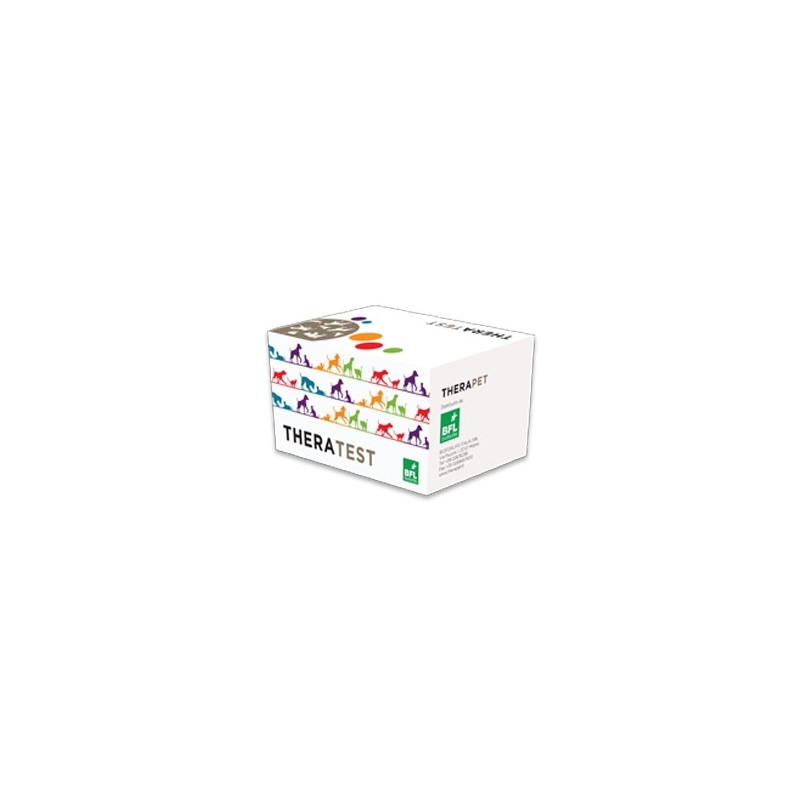

![]() 0808406035
0808406035
![]() 0808406035
0808406035
The test consists of a round well where the sample is added and gives a result area containing the T line (Tesî line and the C line (control line).
Once the sample is placed in the well, migration by capillarity begins along the membrane.
If the result is negative, only one colored band will appear in zone C.
The band in zone C always appears, since it is a control band and indicates the correct execution of the test.
If the result is positive, in addition to band C, a colored band will also appear in the test area (line T).
Materials provided
1. Test individually packaged in foil pouches
2. Disposable pipettes for dosing the sample
3. Vial with reagent
4. Instructions for use
Precautions
1. For veterinary use only
2. For best results, carefully follow the instructions for use
3. All specimens should be handled as potentially infectious. Wash and disinfect hands after handling. Avoid aerosol formation when distributing the sample.
4. Do not open or remove the test from its individual foil pouch until it is actually used.
5. Do not use the test if the casing is broken or damaged.
6. Do not waste.
7. All test components must be at room temperature before using it.
8. Do not use after the expiration date printed on the carton and aluminum container.
9 The quality of the kit components has been specifically calibrated for each lot. Do not mix with other components or reagents from different lots.
Conservation and stability
The kit must be stored at a temperature between 2 ° and 30 ° C.
In compliance with these conditions, stability is guaranteed up to the expiration date printed on the box and on the individual container.
The kit has been designed to be stored at room temperature.
Although it can be stored in the refrigerator, it is recommended to do so at room temperature, to avoid having to wait for the reagents to reach room temperature, which is necessary for their use.
DO NOT FREEZE. Do not expose directly to sunlight for an extended period of time
Sample collection and preparation
The test can be performed with serum, plasma or whole blood,
WHOLE BLOOD
Take a blood sample using traditional methods and collect it in a vial with anticoagulant (Heparin, EDTA or citrate).
Blood must be analyzed within 4 hours after extraction.
If this is not possible, it can be stored in the refrigerator between 2 ° and 8 ° C, up to a maximum of 24 hours. DO NOT FREEZE.
Samples subjected to hemolysis can alter the result.
PLASMA
Take a blood sample using traditional methods and collect it in a vial with anticoagulant (Heparin, EDTA or citrate).
Separate the plasma by centrifuge.
The plasma is kept refrigerated at a temperature between 2 ° and 8 ° C up to a maximum of 72 hours.
For longer storage, it must be frozen at a temperature below -20 ° C.
If the sample was stored refrigerated, it must be allowed to reach room temperature before testing.
SERUM
Take a blood sample using traditional methods and collect it in a clean vial WITHOUT ANTICOAGULANT.
Separate the serum by centrifuge.
The whey is kept refrigerated at a temperature between 2 ° and 8 ° C up to a maximum of 72 hours.
For longer storage, it must be frozen at a temperature below -20 ° C.
If the sample was stored refrigerated, it must be allowed to reach room temperature before testing